A blank roll of film after development is one of a film photographer’s worst fear because it means all the moments you tried to capture did not make it to the film negatives and are lost. Luckly, their are steps to take to avoid blank film negatives and are easy once you know them and how to recognize them.
There are several ways to avoid blank 35mm film rolls but the easiest way is to make sure to correctly load film into your camera and that it advances through the camera properly.
In this article we will be exploring the most common mistakes photographers make that result in blank film rolls based on my experience as a photography teacher. Hopefully, once you learn these tips it will help you avoid having to go through the experience of getting back a blank film roll back from your developing lab or developing one yourself.
What Does a Blank Film Roll Look Like?
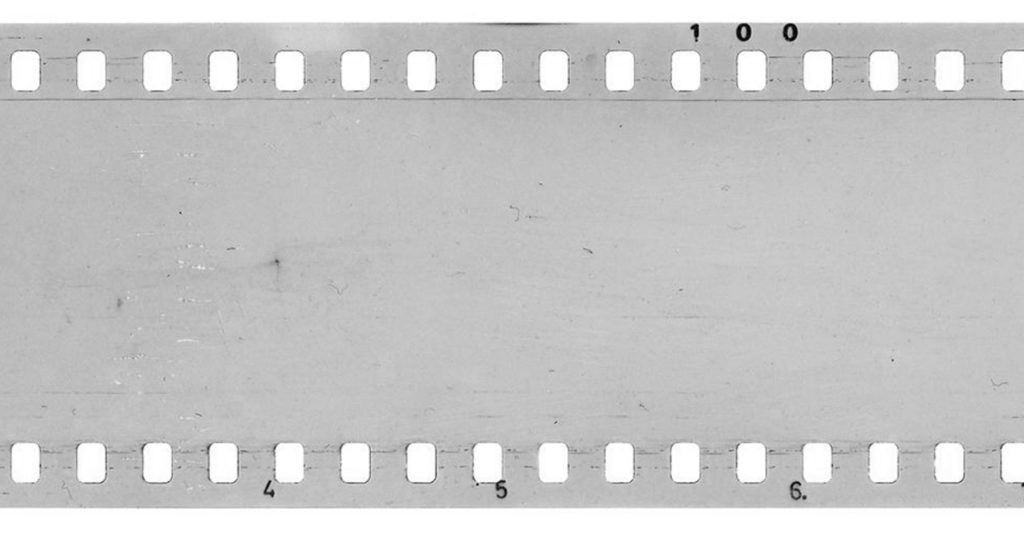
If the blank roll of film looks completely clear except for some markings on the edges of the film and a sign that the frame of the film or the roll was not exposed to light. There are no visible images on the roll as the film was not exposed to light. The most likely reason the film is blank is because the film was not correctly loaded so the film couldn’t advance through the camera.
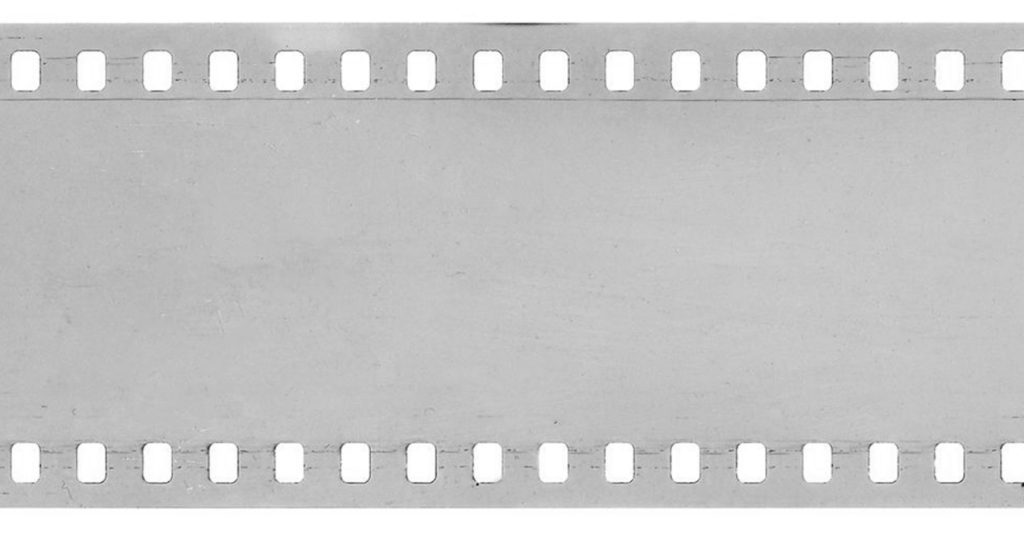
If the film is completely clear without an image and no numbers or information along the edge, this means it was most likely a processing issue that caused the film to be blank. See the related article below for more information on what may have caused the film processing error.
Related Article: Top 26 Film Developing Problems: What to Look for and How to Prevent Them
What Causes Blank Negatives?
There are 5 common causes for blank negatives with the most likely reason your negatives were blank is because the film was not loaded correctly into the camera.
When the film is loaded the wrong way, the it doesn’t move through the camera and no light hits the film to make an image. This can easily be remedied by making sure the film rewind lever is turning while the film advances through the camera.
Other common reasons that cause blank negatives:
- The lens cap was on the camera while taking images.
- The light meter on your camera is broken or the shot was so underexposed that little, if any, light made it to the negative (for example, the shutter was set at 1/5000th or the aperture was f16 in a very dark room or at night)
- Opening the film door on your camera before the film is fully rewound back into the film canister
- Sending unused rolls of film for processing. Always check the film canister before sending it to be processed. If you see the film leader outside of the canister, the film is most likely unused.
- One unlikely reason your film came out blank is because of a film processing error.
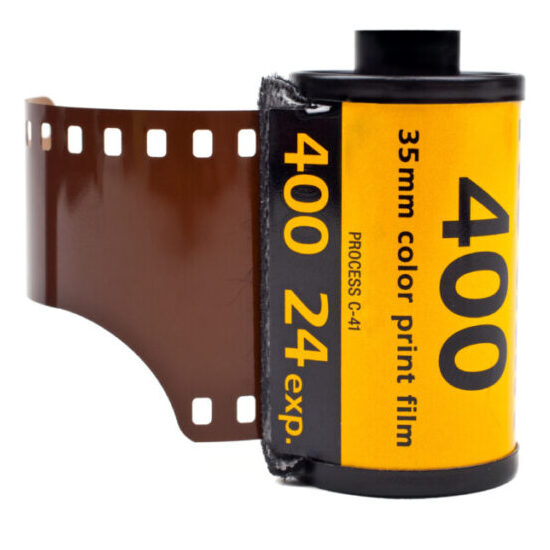
How to Load A Camera With Film to Avoid Blank Film Rolls?
Your main goal when loading film into a camera to prevent blank film rolls is to do it properly. There are several types of film cameras with similar and different ways to load film into a camera. Below we have listed the steps your will need to follow to correctly load film organized by camera and film format:
How to Load Film Into SLR 35mm Cameras To Avoid Blank Film
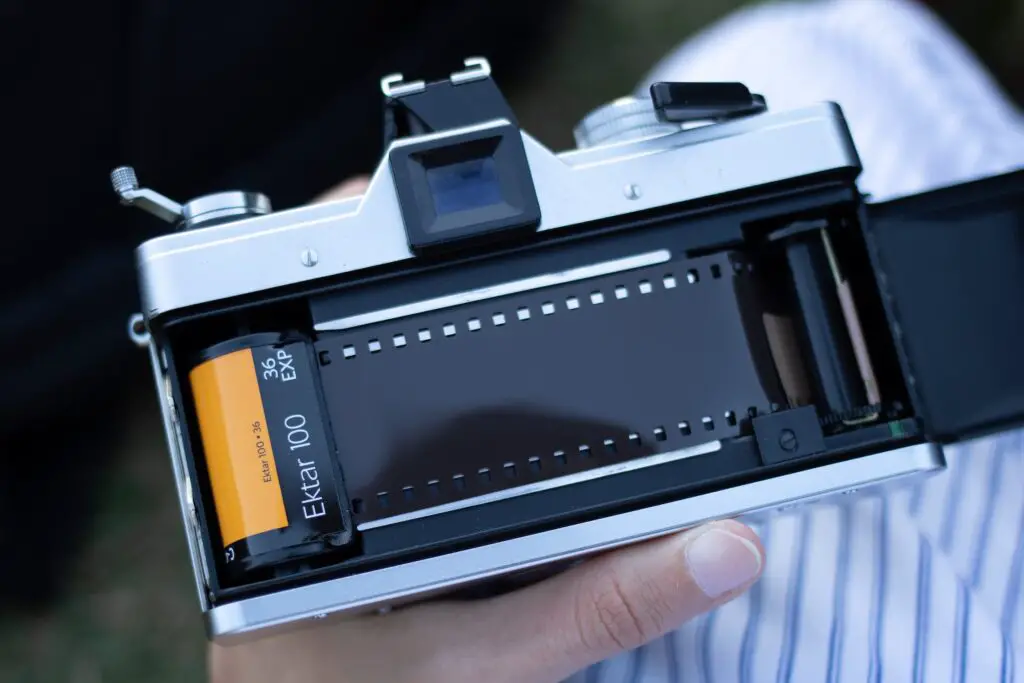
For 35mm film, follow these steps to avoid blank film rolls by incorrectly loading your film:
- The first step is to open the film camera’s back door by pulling the film rewind lever up. This will release the lock that holds the film door on the back of the camera closed.
- Next, take the film canister and insert it to the left side of the camera with the knob on the film canister pointing down. Once the film canister is in the camera lower the film rewind lever to hold it in place.
- Now that the film canister is securely in the camera, pull the film leader toward the take-up spool on the other side of the camera. The most important step is to feed the film into the slot in the take-up spool correctly by feeding it through the slot in the take-up spool and
- Next, check if the film is securely attached to the film take up spool by rotating the take-up spool with your thumb until the film is tight along the inside of the camera and the film perforations (or sprocket holes) are aligned with the film counter sprocket.
- Next, close the back of the camera that you opened to put the film in. You should hear a snapping or locking sound to indicate the door has closed correctly.
- Lastly, check if the film counter moves when taking an image and using the film advance lever to advance the film to the next frame. Also pay attention to see if the film rewind lever is also rotating to indicate the film is moving through the camera. Test fire the camera once or twice to make sure that the film counter is also working properly.
NOTE: If the film rewind lever spins when using the film advance lever then you will know that the film has latched onto the take-up spool and is moving through the camera correctly.
How To Load Film Into Rangefinder 35mm Cameras To Avoid Blank Film
35mm rangefinders have similar steps to a SLR 35mm when loading film depending on the which model you have. For example some rangefinder cameras have a film advancement lever while others have a wheel, some rangefinder cameras load the film in the back while others may load the film through the bottom.
However, loading film into a 35mm rangefinder camera can be summarized as opening the film camera’s back door (or removing the bottom plate like with older models of Leicas and other brands), loading the film, and ensuring that the film leader is fed and properly secured to the take-up spool. Like with the 35m SLR camera, also check to see if the film rewind lever on the rangefinder camera rotates when advancing the film to make sure the film is moving through it.
Related Article: Rangefinder vs SLR Cameras: Main Differences Explained
How To Load Film Into Plastic 35mm Point & Shoot Cameras or Reloaded Disposable Cameras To Avoid Blank Film
35mm plastic Point & Shoot cameras or reloadable disposable cameras have a similar film loading process to 35mm SLR and Rangefinder cameras. However, the main difference is that the 35mm point & shoot camera has a film advance wheel instead of a lever. Follow these steps to avoid blank film rolls by incorrectly loading your film into a plastic 35mm point & shoot camera:
have a similar film loading process to 35mm SLR and Rangefinder cameras. However, the main difference is that the 35mm point & shoot camera has a film advance wheel instead of a lever. Follow these steps to avoid blank film rolls by incorrectly loading your film into a plastic 35mm point & shoot camera:
- The first step is to open the film camera’s back door by pulling the film rewind lever up or using the film door release button likely on the side of the camera. This will release the lock that holds the film door on the back of the camera closed.
- Next, take the film canister and insert it to the left side of the camera with the knob on the film canister pointing down. Once the film canister is in the camera lower the film rewind lever to hold it in place.
- Now that the film canister is securely in the camera, pull the film leader toward the take-up spool on the other side of the camera. The most important step is to feed the film into the slot in the take-up spool correctly by feeding it through the slot in the take-up spool and
- Next, check if the film is securely attached to the film take up spool by rotating the take-up spool with your thumb until the film is tight along the inside of the camera and the film perforations (or sprocket holes) are aligned with the film counter sprocket.
- Next, close the back of the camera that you opened to put the film in. You should hear a snapping or locking sound to indicate the door has closed correctly.
- Lastly, check if the film counter moves when taking an image and using the film advance wheel on the back of the camera to advance the film to the next frame. Also pay attention to see if the film rewind lever is also rotating to indicate the film is moving through the camera. Test fire the camera once or twice to make sure that the film counter is also working properly.
NOTE: If the film rewind lever spins when using the film advance wheel then you will know that the film has latched onto the take-up spool and is moving through the camera correctly.
How To Load Film Into Automatic Point & Shoot 35mm Cameras To Avoid Blank Film
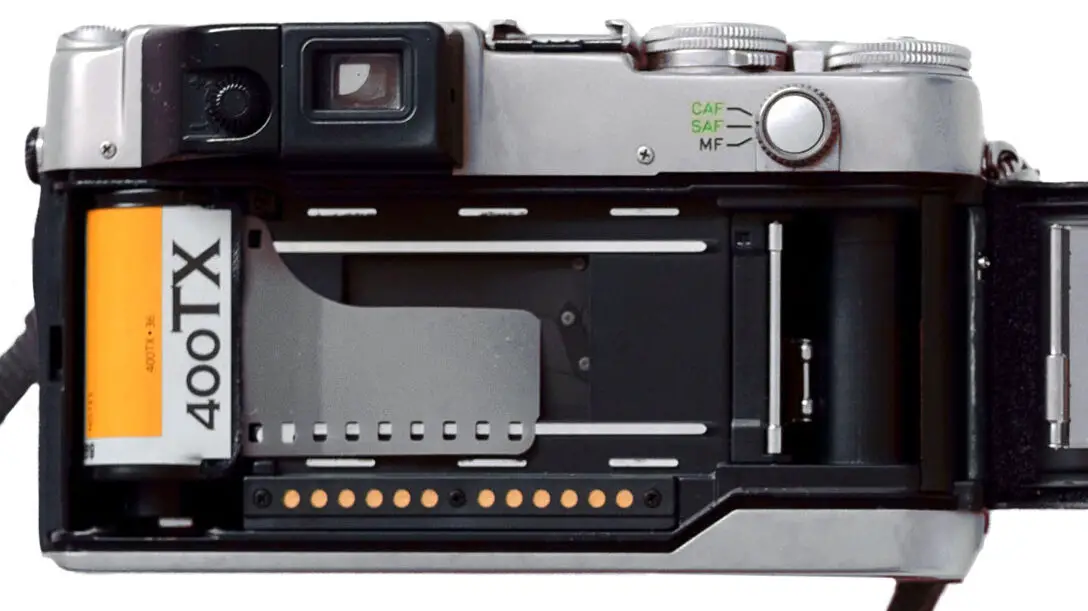
Battery-operated Point & Shoot 35mm cameras, like the Contax G series of cameras , usually have an automatic film advance mechanism so you only need to worry about lining up the film leader when loading the film.
, usually have an automatic film advance mechanism so you only need to worry about lining up the film leader when loading the film.
Follow these steps to load 35mm film correctly into an automatic 35mm film camera:
- Open the film camera back by sliding a lever or latch and load the film.
- Pull the film leader from the film canister and insert it into the notch on the take-up spool if it has one. If the take-up spool does not have a notch, simply ensure that the holes on the upper and lower edge of the film are aligned with the sprockets inside the camera. Usually there are notches or indications on the inside of the camera or film door to help you line up the film.
- Make sure the film is tight against the inside of the camera and not floating off of it.
- Close the film door and the camera will automatically advance the film to the first frame. Remember to take a test shot to check if the film counter is working.
Related Article: Point & Shoot Film Cameras: What They Are, Tips, and What to Buy
How To Load Film Into 110 Cameras To Avoid Blank Film
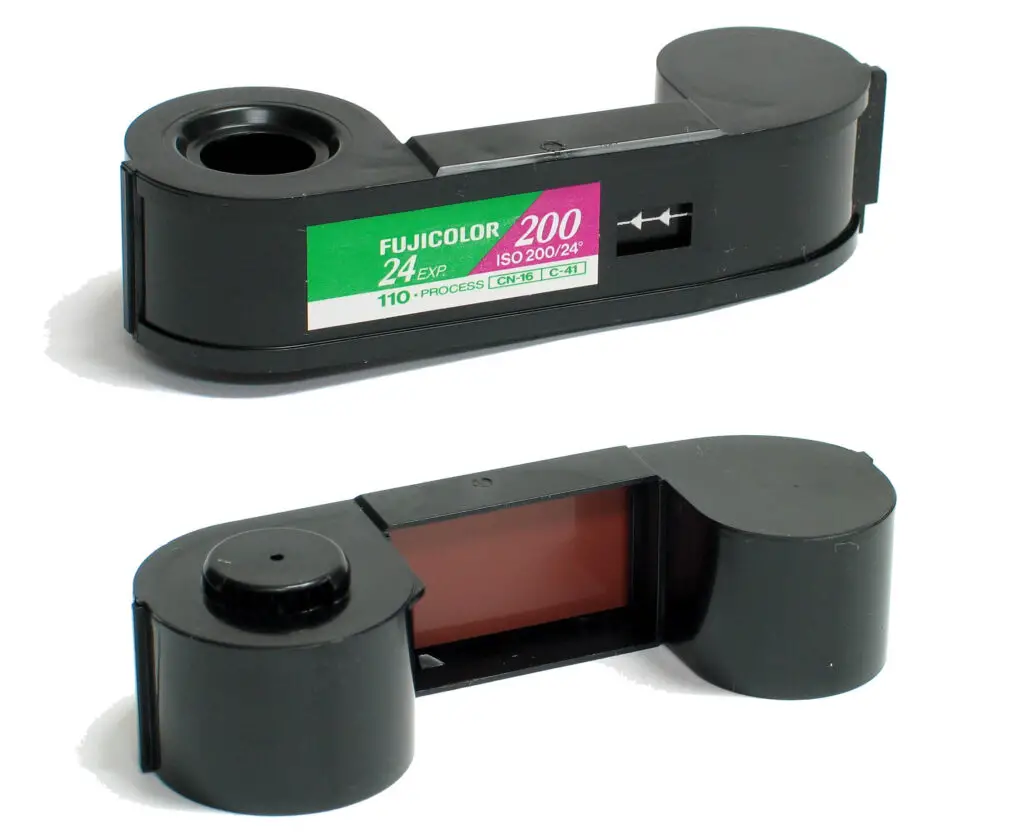
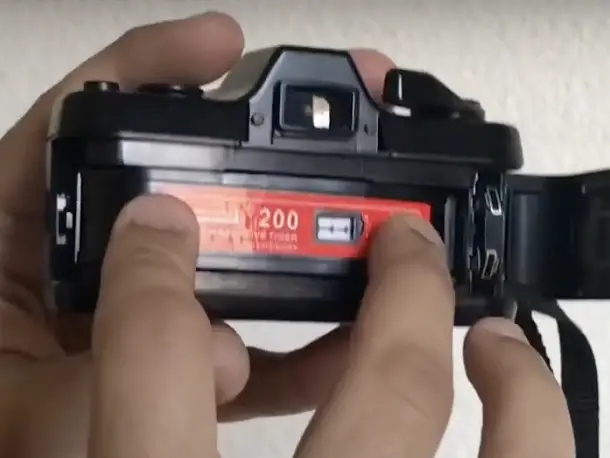
110 film and cameras were designed to take the guessing out of loading film into the camera.
The 110 film canisters have take-up spools built in rather than relying on the inside of the camera like most 35mm cameras. Because of the small size of the 110 camera and film there are many different sizes and type of cameras and ways to load film but a majority are intuitive.
Most 110 cameras load the film with the protrusion on the film canister pointed down but it can vary from camera to camera. Follow these steps to load the 110 film into a 110 camera:
- Open the film camera’s back door or find the area on the camera the film is supposed to be loaded.
- After loading the film, close the film door and advance the film using the film advance wheel, slider, or lever. The arrows in the film counter window on the back of the film canister tells you to keep going until a number 1 with a dot on either side appears in the window at which point your camera should stop winding.
- You are now ready to take your first shot.
Related Article: All About 110 Film
How To Load Film Into APS Cameras To Avoid Blank Film
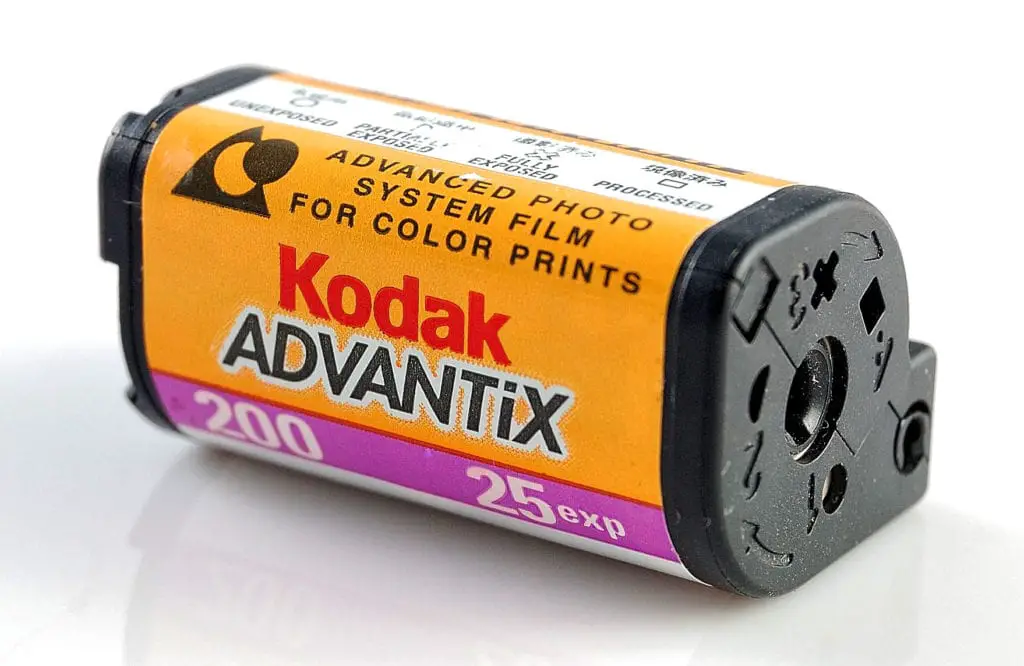
Like 110 film, APS film and film cameras (also known as Kodak Advantix) were and automatic and designed to be much easier to load to reduce blank film rolls. Because of this to load film into a APS / Advantix camera:
- Open the film door usually located on the bottom or back of the camera
- Insert the film canister by lining it up correctly, and close the film door
- The camera will automatically advance the film to the first useable frame in the roll.
For more information about the APS or Advantix camera system, check out this great youtube video by DPReview channel that sums up the APS film format quite well.
quite well.
Can You Reuse Blank film?
No, you cannot reuse blank film to make images once it has been developed.
This is because film is sensitive to light. After the film is developed it goes through a chemical process that locks the images onto the image and make them unaffected by light similar to before the film is developed.
However, you can use the film to help get the film leader out of an unused film cartridge using water or double-sided tape.
Related Article: 4 Ways to Get 35mm Film Out of A Film Canister
In Summary
While there are several reason why your film roll is blank, the best ways to prevent blank film rolls is to make sure that the film is loaded in the camera properly and is correctly moving through the camera.
Knowing how to properly load a roll of film is an important skill that photographers must have when using 35mm SLR, 35mm rangefinder, 110, APS, and 35mm point & shoot cameras in order to avoid blank rolls of film so take the time to get things right and the steps will become second nature.
